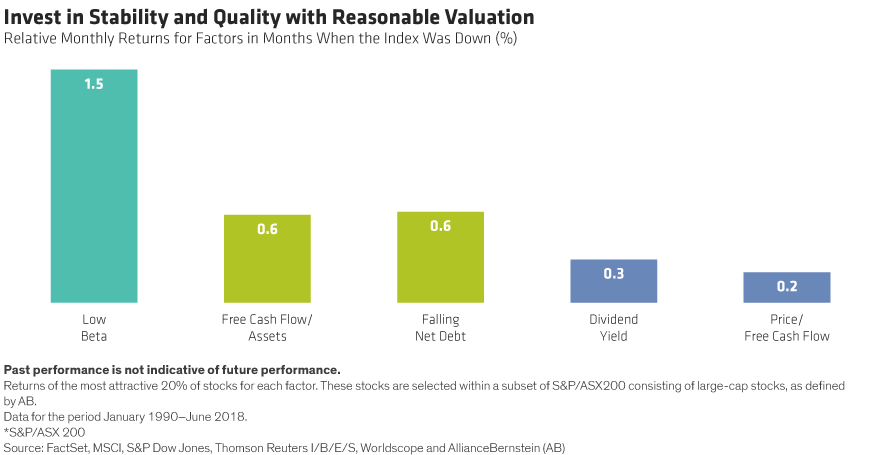Roy Maslen, Chief Investment Officer—Australian Equities
While a portfolio of stocks with low volatility or relatively stable share prices might sound low maintenance, it shouldn’t be confused with a passive strategy. “Smoothing the ride” through the market’s ups and downs requires careful design and dynamic active management.
We believe that investors should consider focusing on four critical steps to implement a low-volatility equity strategy successfully. In this blog, we look at step number 1:
Invest in stocks with attractive stability, quality and price attributes.
There are multiple ways designed to beat the benchmark in equities. For investors focused on beating it by reducing downside, stability matters most.
Research shows that it’s logical to begin with price stability, identifying stocks with low beta or a low correlation to broad market moves. A stock’s beta can change over time, so it’s important to look at how the stock has performed relative to the market over a long period (five years, for example) as well as more recently (the past 12 months). This perspective helps gauge whether the overall pattern of stability may be changing.
But stability alone is not enough: a focus on quality can uncover stocks that may be more likely to offer lasting stability. Price or a reasonable valuation is always important, too, because stability should be bought at the best possible price.
The importance of combining low volatility (low beta) with quality (balance-sheet strength) and reasonable valuation (a low price-to-free-cash-flow ratio) is shown in the Display, together with other relevant factors.
Each bar shows the returns for the most attractive 20% of stocks for each factor during the months when the S&P/ASX 200 was down for a selected period. Stocks with high free cash flow to assets, low asset growth, and declining shares on issue and net debt have delivered superior returns in down markets.
Quantitative research can be an effective tool in identifying and analysing the presence of these factors across all stocks in the market.

Next step: Avoid volatility traps